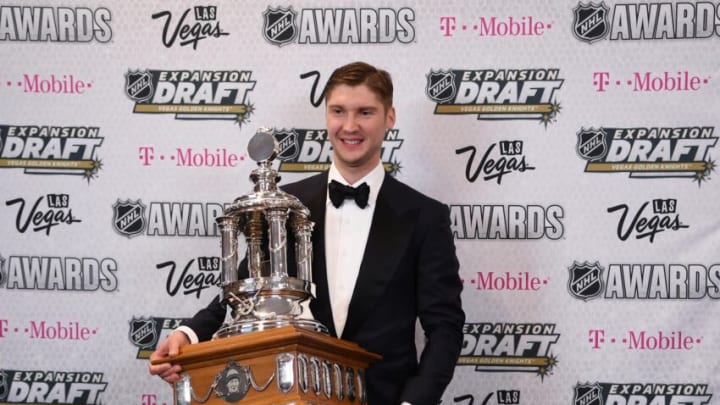Remember when all of the talent left in 2019, and we entered that season with a team that was a shell of its former self? Remember making the playoffs that very same year? I do.
#4: Elvis Has Entered the Building
The 2019-20 NHL season ultimately wound up being shortened due to the COVID pandemic. This led to the league implementing a playoff bubble, played in August of 2020. The playoff bubble gave us the opportunity to see the Jackets win their 5-game qualifying series against the Toronto Maple Leafs, setting us up for a rematch against the Tampa Bay Lightning in the first round of the actual playoffs.
We all know the outcome of that series. But, many of us remember those playoffs for fond reasons. Whether it’s Pierre-Luc Dubois absolutely taking over game 3 of that qualifying series, netting a hat trick and pulling the team to victory after a 3-0 deficit. Or Joonas Korpisalo’s heroic 85 save performance in game 1 against Tampa Bay. It was a fun summer of hockey.
That summer of hockey would not have taken place, if not for the play of rookie goaltender Elvis Merzlikins. Coming over from Europe in the spring of 2019, he was able to witness the team’s magical first-round upset of the Lightning first-hand. After Sergei Bobrovsky, Matt Duchene, and Artemi Panarin all left that summer, we turned our hopes towards a younger, less skilled group – which included the much-talked about Merzlikins, who had plenty of success overseas.

His rookie season did not start off ideally. In fact, it’s fair to say that Elvis was downright awful to start his CBJ career; playing in just 11 games (9 starts) that fall, before Joonas Korpisalo went down with injury right around Christmas. Being given the reins seemed to be the spark that Elvis needed to get his game going. After picking up his first win on New Years Eve, he went on to win 12 of his next 14 starts for the team, including 5 shutouts.
Even with the poor start to the year, Elvis played a total of 33 games that season (31 starts); owning a 13-9-8 record, with a .923 save percentage and 2.35 goals against average; along with 5 shutouts. When the league paused for the pandemic, the Jackets were right on the playoff line – a place where they really shouldn’t have been. Without Elvis stepping in and having a red-hot run when the whole world counted us out, that would not have been possible.
